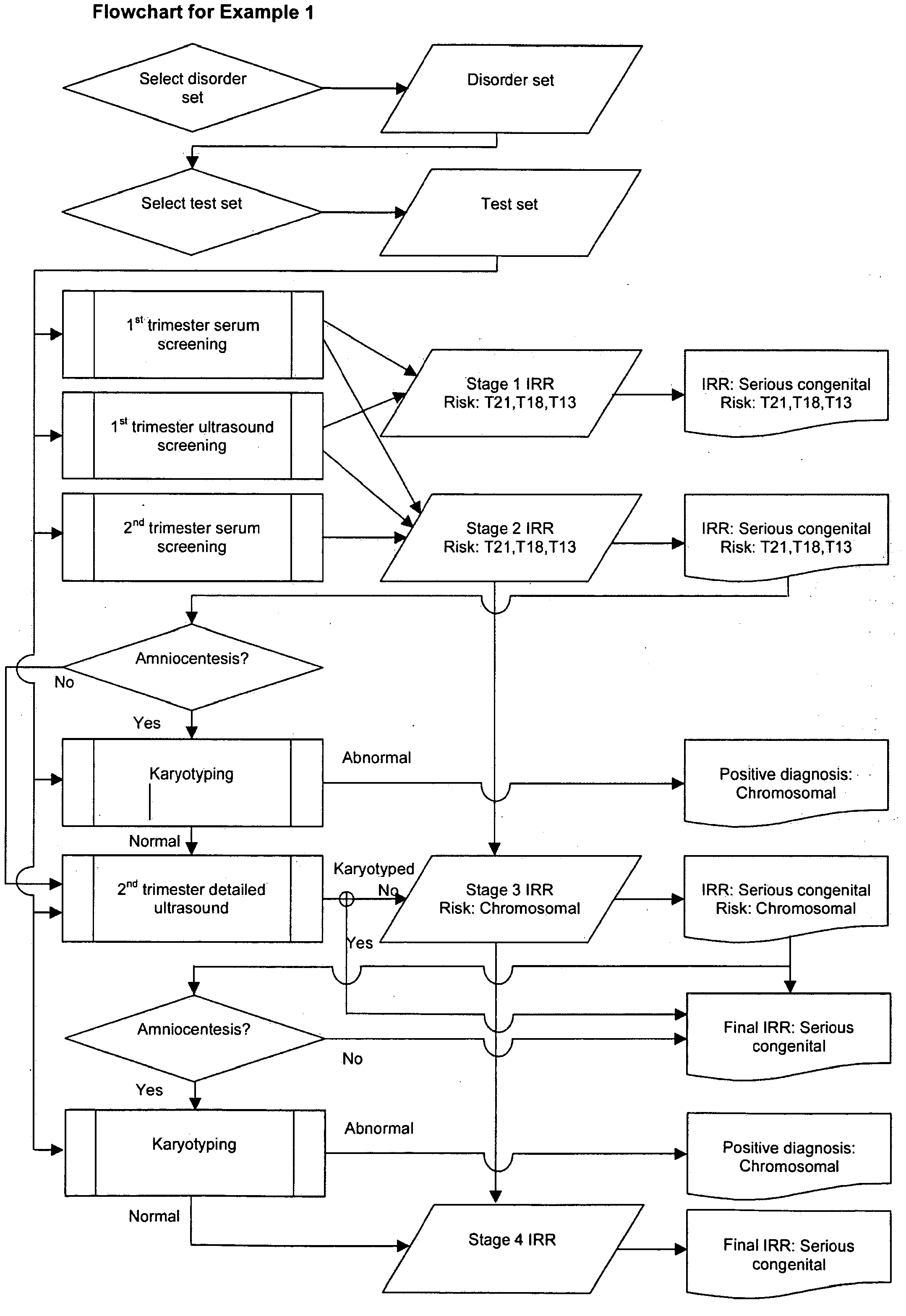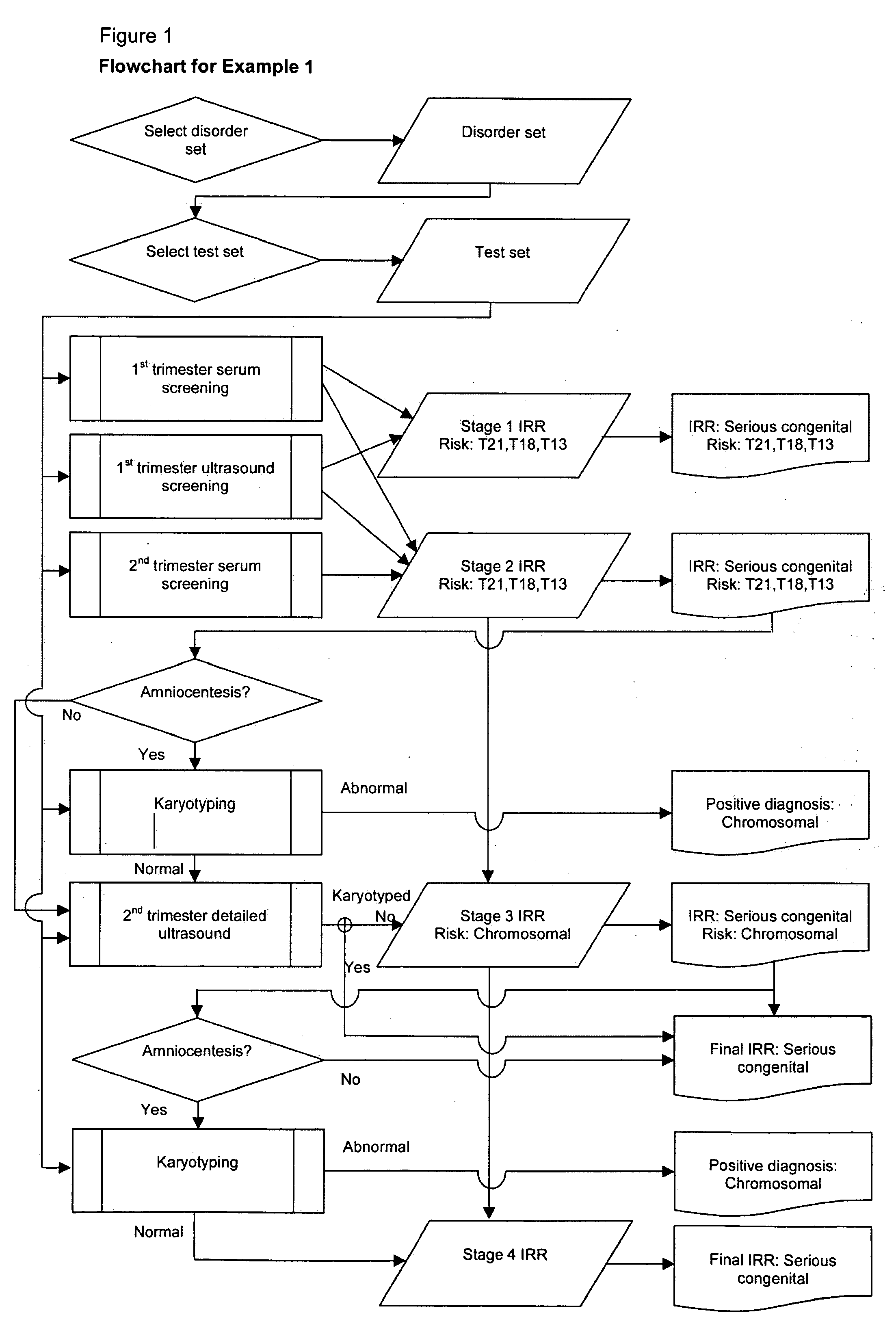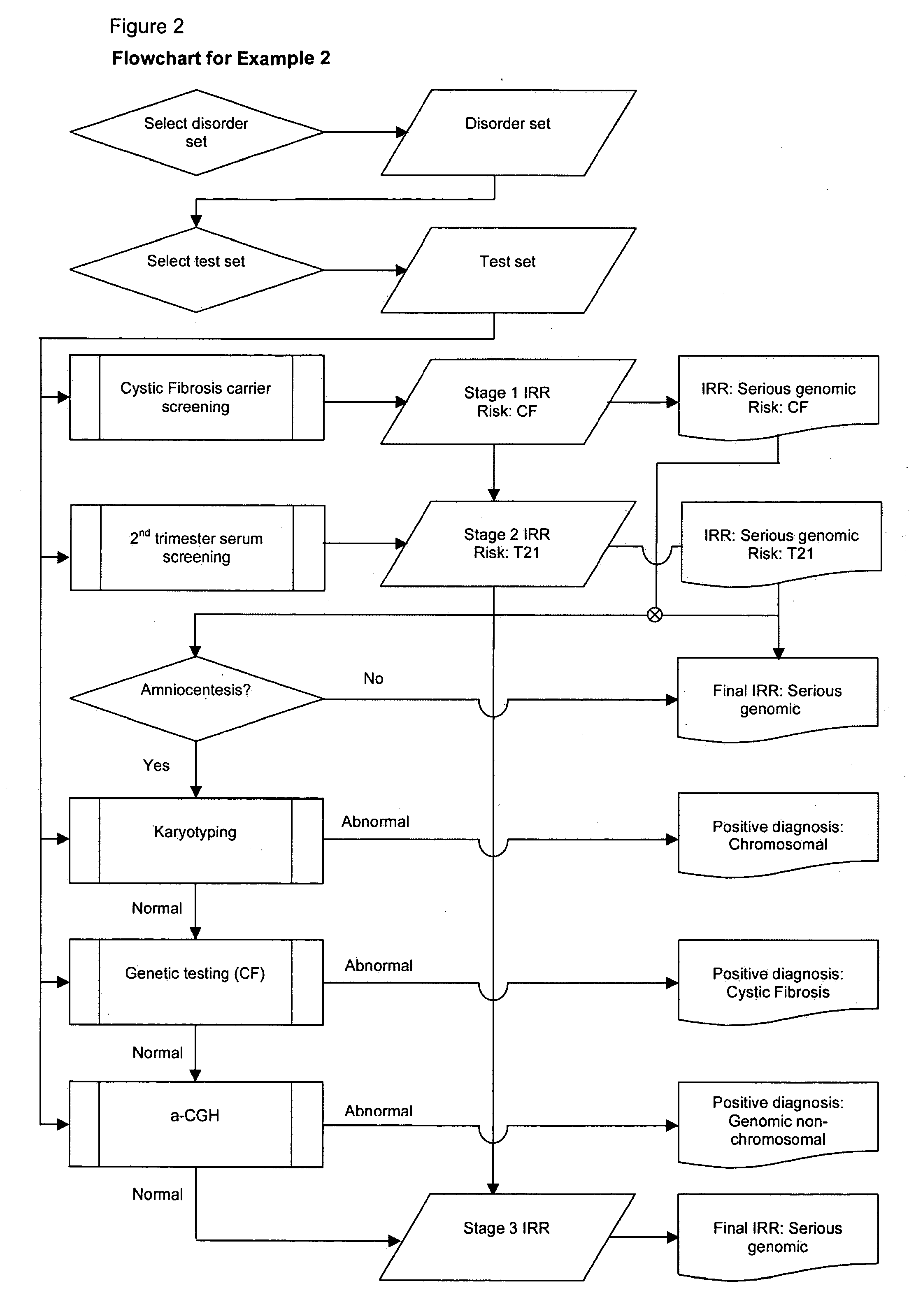Testing process
a testing process and prenatal technology, applied in the field of prenatal testing methods, can solve the problems of a large number of prenatal testing providers, the risk calculation of down syndrome is complex and requires dedicated software, and the method may produce a risk for a specified disorder or group of disorders
- Summary
- Abstract
- Description
- Claims
- Application Information
AI Technical Summary
Benefits of technology
Problems solved by technology
Method used
Image
Examples
example 1
[0137]Patient: Maternal age at estimated date of delivery (MAEDD)=35 years.
[0138]No previous affected pregnancy.
[0139]Disorder set: All serious congenital.
[0140]Scheduled tests: 1st trimester serum+ultrasound screening for T21, T18, T13; 2nd trimester serum screening for T21, T18, T13; 2nd trimester detailed ultrasound; karyotyping recommended if chromosomal anomaly risk above High Risk cutoff of 1 in 250.
[0141]1) Prior Risk Calculation
[0142]Typical published figure for all serious congenital disorders (not maternal age specific) is 1 in 37 i.e. odds 1:36. This is an average value across the MAEDD range, so is equivalent to the risk for an MAEDD in the middle range, i.e. approximately 30 years. The published figure includes some disorders for which age-specific data is available, and for these disorders, their contribution to the published overall value is replaced with age-specific values. The following method can be used to incorporate age-specific data for any disorder for which ...
example 2
[0192]Patient: MAEDD=40 years
[0193]No previous affected pregnancy.
[0194]Disorder set=All serious genomic.
[0195]Scheduled tests: Cystic Fibrosis (CF) carrier screening; 2nd trimester serum for T21; karyotyping recommended if T21 risk above High Risk cutoff of 1 in 250; genetic testing recommended if CF carrier screening indicates a High Risk category; a-CGH if invasive test performed.
[0196]1) Prior Risk Calculation
[0197]Typical published figure for all serious congenital disorders (not maternal age specific) is 1 in 37. Of this risk approximately 25% is due to currently known genomic causes, so risk of serious genomic disorder is 1 in 148 i.e. odds 1:147. As in example 1, assume the overall figure corresponds to MAEDD 30 and adjust for maternal age by substituting chromosomal component with age-related value.
[0198]Steps:
[0199]a) Calculate age-corrected prior odds:
[0200]Prior odds for all chromosomal at MAEDD 30=1:500.
[0201]Prior odds for non-chromosomal serious genomic=Overall genomi...
example 3
Examples of General Applications of Inclusive Residual Risk
[0247]i) For a patient presenting a raised nuchal translucency after the first trimester ultrasound, and therefore having an increased risk of chromosomal anomalies and cardiac defects, the inclusive residual risk may represent the risk of these disorders. Depending on the risk at this stage, the inclusive residual risk could be modified, for example by performing a karyotyping diagnostic test to modify or remove the risk of chromosomal anomaly. The risk may be further modified by use of fetal imaging to provide a likelihood ratio or diagnosis of cardiac defects.
[0248]ii) For a patient who undergoes quantitative fluorescence polymerase chain reaction testing (QF-PCR), instead of full karyotyping, the final inclusive residual risk may represent the risk of any undetected serious chromosomal anomaly.
[0249]iii) Where there is a family history of severe mental retardation of unknown etiology, the inclusive residual risk may take...
PUM
 Login to View More
Login to View More Abstract
Description
Claims
Application Information
 Login to View More
Login to View More - R&D
- Intellectual Property
- Life Sciences
- Materials
- Tech Scout
- Unparalleled Data Quality
- Higher Quality Content
- 60% Fewer Hallucinations
Browse by: Latest US Patents, China's latest patents, Technical Efficacy Thesaurus, Application Domain, Technology Topic, Popular Technical Reports.
© 2025 PatSnap. All rights reserved.Legal|Privacy policy|Modern Slavery Act Transparency Statement|Sitemap|About US| Contact US: help@patsnap.com



